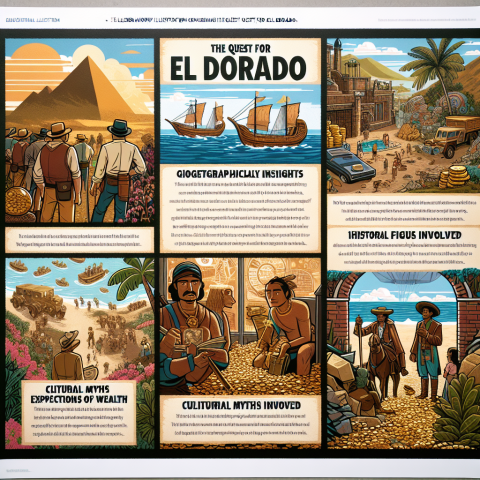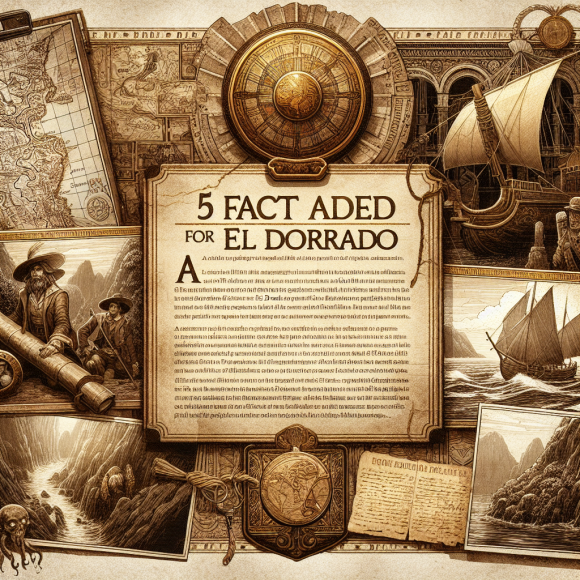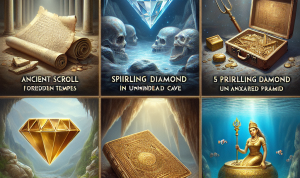El Dorado – The quest for El Dorado has fascinated adventurers, historians, and treasure hunters for centuries. That legendary city of gold, hidden deep within the jungles of South America, became a symbol of ultimate fortune. As someone who’s been knee-deep in the stories and myths surrounding El Dorado for years, let me tell you: there are some facts about this pursuit that you may not have come across. If you think you know all there is about El Dorado, think again. Let’s dive in!

The Quest for El Dorado: 5 Facts You Didn’t Know
1. El Dorado wasn’t a city, but a man.
I’ve always heard about the mythical “city of gold,” but guess what? El Dorado wasn’t actually a city at all. It started as a description of a man. In the 16th century, Spanish conquistadors heard stories about a tribal leader in what is now Colombia, known as the Zipa of Bacatá. This leader was said to cover himself in gold dust and then wash it off in a lake as part of a religious ceremony. The Spanish thought, “Gold-covered king? There must be a whole city full of treasure.” So, they set off on expeditions, searching for what they assumed was a glittering metropolis filled with gold.
This idea eventually morphed into the “City of El Dorado,” but it’s important to know that the real El Dorado wasn’t made of gold—it was a man with a glittering ritual. But that didn’t stop hundreds of treasure hunters from falling for the story and venturing into the jungles.
2. The search for El Dorado led to the exploration of the Amazon.
This is one of those facts I didn’t expect to find when I first started researching. The quest for El Dorado had far-reaching consequences, not just in terms of treasure, but also in the exploration of the entire South American continent. Conquistadors ventured deep into the heart of the continent, some even heading toward what we know now as the Amazon Rainforest.
Think about it: these explorers weren’t looking for scientific data or exotic species—they were just hunting gold. Yet, in their search, they mapped out unknown territories, discovered new rivers, and expanded the world’s knowledge of South America. Ironically, El Dorado’s myth sparked a wave of exploration that led to the discovery of regions we now consider crucial to our understanding of the planet.
3. Many expeditions failed, but they left behind a trail of destruction.
It’s easy to romanticize the idea of treasure hunters trudging through jungles, braving dangerous terrain. But when you dig deeper, you realize how much destruction these expeditions caused. The truth is, many of the Spanish expeditions ended in failure. Yet, they still left a legacy of violence and destruction behind.
While they may not have found the glittering city of gold they were looking for, they did leave a trail of decimated indigenous populations, burned villages, and untold damage to the natural landscape. What started as a search for treasure turned into a brutal period of colonization. It’s a bit of a downer to think about, but it’s an essential piece of the story. So, while the myth of El Dorado didn’t pan out, the human cost of the search was very real.
4. The “City of Gold” might have been inspired by ancient civilizations.
In my opinion, there’s a bit of truth hidden in the El Dorado myth. Historians believe that the story may have been inspired by the great civilizations that once lived in South America. The Incas, for example, were known for their impressive use of gold in art and religious ceremonies. The Spanish likely saw this gold usage and assumed there was an entire city or empire built from the precious metal.
In fact, some researchers have suggested that the myth of El Dorado could have originated from the Muisca Confederation, a group of tribes in present-day Colombia. They had a gold-rich culture, and their leaders practiced the famous “El Dorado” ritual of covering themselves in gold dust. So, in a way, the legend of El Dorado wasn’t entirely fabricated—it’s likely rooted in historical truths about ancient civilizations and their relationship with gold.
5. El Dorado is still a symbol of adventure.
Even though El Dorado isn’t a tangible destination on any map today, its legacy lives on. The myth of the city of gold has been romanticized in art, literature, and pop culture. From early explorers to Indiana Jones-style adventurers, El Dorado continues to represent the ultimate prize in human exploration and discovery.
I’ve found that the allure of El Dorado is more than just about gold. It’s about the idea of a hidden paradise waiting to be discovered. A place where untold riches await, but also where daring individuals can prove their bravery and risk it all for something greater. Even though the city of gold doesn’t exist, the quest for it has inspired generations to look beyond what’s known, to challenge their own limits, and to embrace the unknown.
As I reflect on the myth of El Dorado, I realize how its legacy is much more than just about treasure. Sure, the allure of gold captured the imagination of many, but the stories, the discoveries, and even the mistakes made during this quest teach us something valuable. The search for El Dorado reminds us of human perseverance, the cost of ambition, and the way legends are born from a mix of truth, exaggeration, and curiosity.
Next time you hear about El Dorado, you might want to think beyond the glittering gold and consider the real story behind the myth. Because, like all good legends, the truth is often stranger than fiction.



